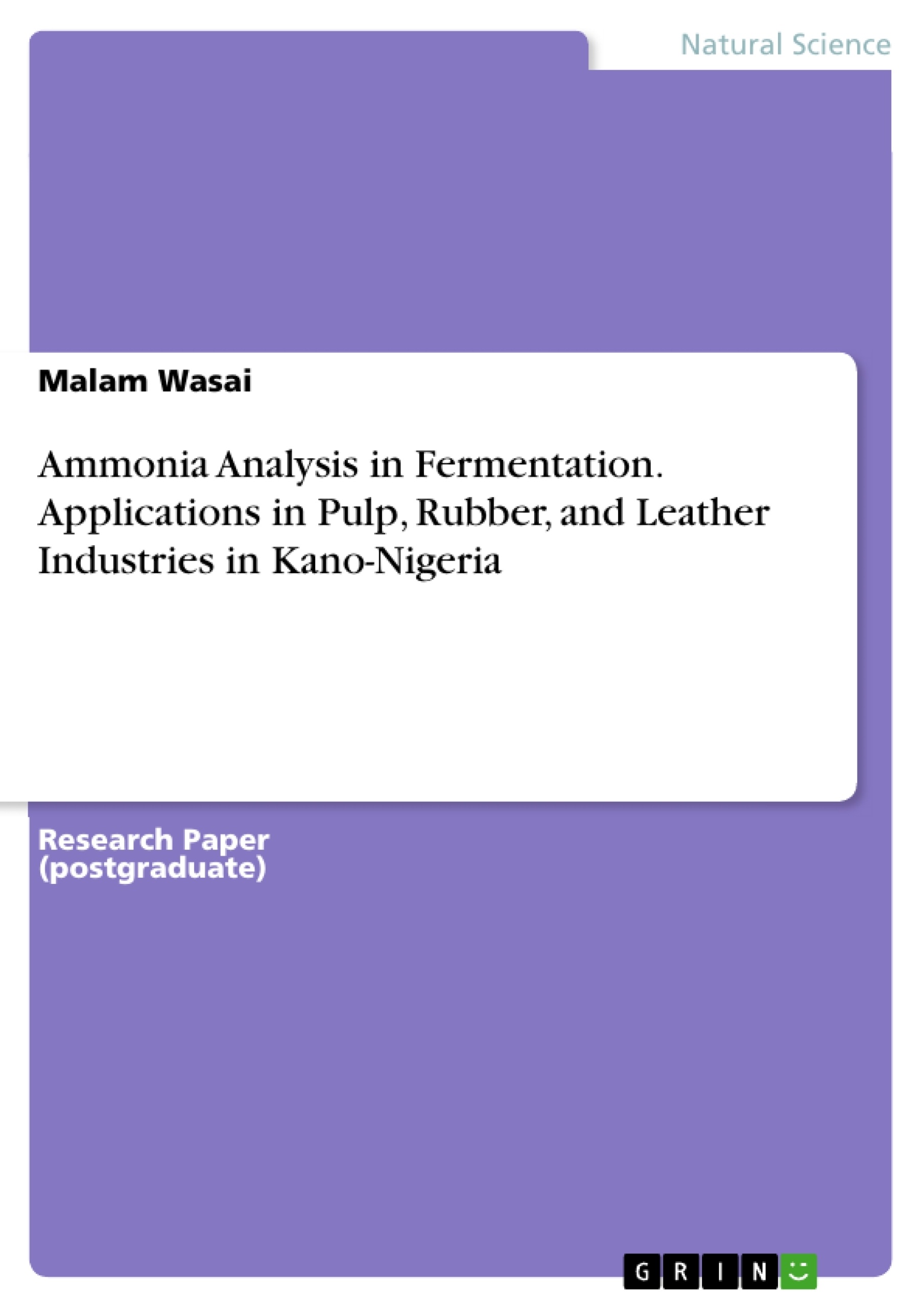This research examines the analysis of ammonia in fermentation at G.J.S.S. Wasai Co-Exist in Minjibir L.G.E.A., Kano-Nigeria. The primary aim is to identify Refrigerant Grade Ammonia for food, comprehend ammonia water for effluent control, and understand the technical ammonia's role in the pulp and paper industry, where it's utilized for pulping wood. Additionally, the study highlights the uses of ammonia in the rubber and leather industries. The dry lab preparation method experiment is based on a 2x4 factorial arrangement considering two nitrogen sources and four TAN levels. Key parameters like rumen temperature, TAN concentration, and pH were also analyzed, with data interpretation using the Pearson correlation coefficient.
Inhaltsverzeichnis (Table of Contents)
- Introduction
- Background to the Study
- Statement of the problems
- Objectives of the Study
- Research questions
- Hypothesis
- Significance of the Study
- Scope and Limitation
- Literature review
- Theoretical Related Literature Review
- Empirical Related Literature Review
Zielsetzung und Themenschwerpunkte (Objectives and Key Themes)
This research aims to analyze ammonia's role in fermentation at G.J.S.S. Wasai Co-Exist, Minjibir L.G.E.A. Kano-Nigeria. The research aims to understand the various industrial applications of ammonia, particularly focusing on its impact on the food, effluent control, and paper industries.
- Ammonia's industrial applications and its impact on various industries.
- The role of ammonia in fermentation processes.
- The effects of ammonia on rumen microbiota and fermentation.
- The relationship between ammonia concentration and pH levels in fermentation.
- The significance of ammonia in livestock production.
Zusammenfassung der Kapitel (Chapter Summaries)
The introduction provides a comprehensive overview of ammonia's diverse applications, highlighting its importance in various industries like wastewater treatment, leather production, rubber manufacturing, paper production, food processing, refrigeration systems, and pharmaceutical manufacturing. The background to the study delves into the specific applications of ammonia in these industries, focusing on its use as a refrigerant in food and beverage production, its role in stabilizing natural and synthetic latex in rubber industries, its application as a curing agent and protective agent in leather processing, and its use in pulping wood and coating paper in the paper industry. The statement of the problem outlines the research question: how does ammonia affect fermentation? The objectives of the study aim to explore the use of ammonia in food production and effluent control. The research questions seek to understand the reasons behind the discovery of refrigerant-grade ammonia for food and the methods used to identify ammonia water for effluent control. The hypothesis proposes a significant relationship between refrigerant-grade ammonia and food, and between ammonia water and effluent control.
The literature review section delves into the theoretical and empirical studies surrounding ammonia's role in fermentation. The theoretical review discusses ammonia's wide use in various industrial applications, including fertilizers, plastics, explosives, and artificial fibers. The empirical review examines the fermentation process, focusing on the anaerobic conditions and the role of microorganisms in this process. The review explores the impact of ammonia on the rumen environment, particularly its effects on rumen microbiota and fermentation.
Schlüsselwörter (Keywords)
The research revolves around key concepts such as ammonia, catalyst/enzymes, chemical technology, industrial appliances, pH value, fermentation, rumen microbiota, and non-protein nitrogen. These keywords encapsulate the primary themes and focus areas of the study, highlighting the diverse applications of ammonia and its significance in various industrial settings.
- Quote paper
- Malam Wasai (Author), 2023, Ammonia Analysis in Fermentation. Applications in Pulp, Rubber, and Leather Industries in Kano-Nigeria, Munich, GRIN Verlag, https://www.grin.com/document/1401158



